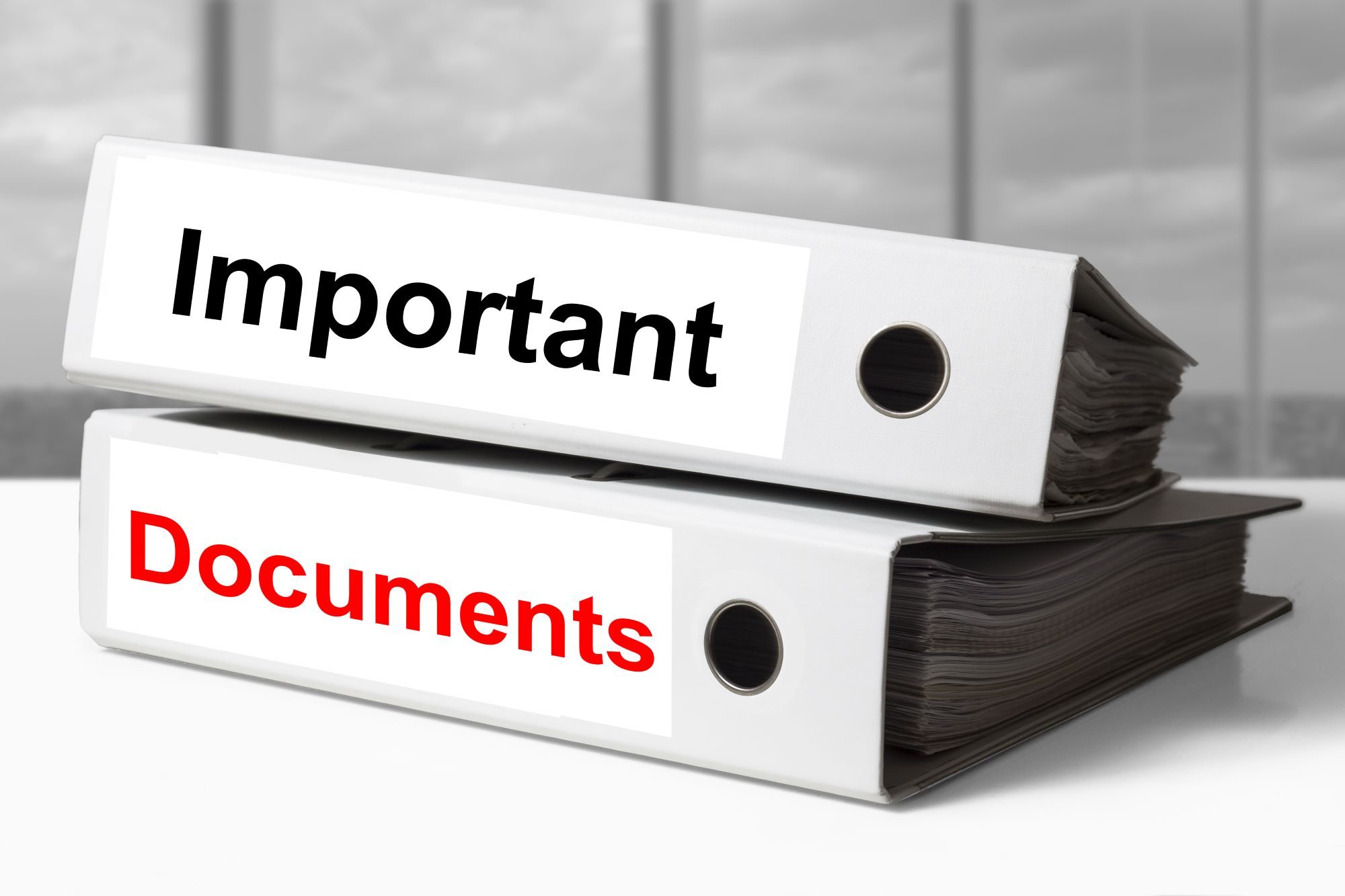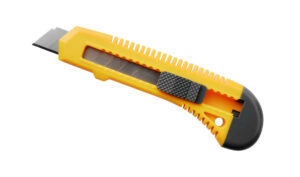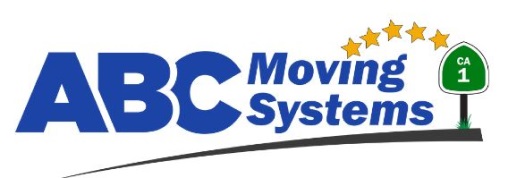
Packing Your Moving Day Essentials
Moving can be a stressful experience, but packing your moving day essentials can make the process smoother. Being well-prepared ensures a seamless transition to your new home. Use this ABC Moving Systems guide to aid you in packing your moving day essentials.
Essential Documents
 When moving, one of the most crucial aspects is organizing your essential documents. These documents include passports, birth certificates, driver’s licenses, and social security cards. It’s essential to keep these items together in a secure folder or a designated box.
When moving, one of the most crucial aspects is organizing your essential documents. These documents include passports, birth certificates, driver’s licenses, and social security cards. It’s essential to keep these items together in a secure folder or a designated box.
Additionally, don’t forget to gather important financial documents like bank statements, insurance policies, and any legal paperwork, such as leases or contracts. Keep these in a separate folder to avoid misplacement.
To make your transition even smoother, create a moving checklist. This list can include contact information for utility companies, emergency contacts, and a moving inventory. Having this list readily available will help you stay organized during the move and ensure you don’t overlook any crucial details.
In the chaos of moving day, it’s easy to misplace or damage vital documents. Therefore, it’s wise to make digital copies and store them securely online. This way, you have a backup if anything goes awry during the move.
By prioritizing the organization of essential documents, you’ll mitigate potential complications and ensure a stress-free move to your new home.
Medications and First Aid
 When preparing for a move, don’t overlook the importance of packing your medications and a basic first aid kit. Here’s how to handle this critical aspect of moving:
When preparing for a move, don’t overlook the importance of packing your medications and a basic first aid kit. Here’s how to handle this critical aspect of moving:
- Medications:
- Gather all your prescription medications, over-the-counter drugs, and vitamins.
- Keep them in their original containers with clear labels.
- Ensure you have an adequate supply for the transition and immediate days in your new home.
- Transport these items in a small, easily accessible container.
- First Aid Kit:
- Assemble a basic first aid kit with bandages, antiseptic wipes, pain relievers, and medical supplies.
- Include any specific medical items needed by family members (EpiPens, inhalers, etc.).
- Keep the first aid kit in a separate, clearly labeled box.
- Place it in an easily reachable location in case of emergencies.
By prioritizing your medications and a well-stocked first aid kit, you’ll be prepared for any unexpected health issues during the move. It’s a small yet significant step to ensure your well-being during this transitional period. ABC Moving Systems has seen this to be a critical step, as it is often difficult to locate specific items once they are boxed on moving day.
Valuables and Sentimental Items
 When moving, it’s essential to handle your valuables and sentimental items with care. These belongings often carry significant personal or financial value. Here are some tips on how to ensure their safety during the move:
When moving, it’s essential to handle your valuables and sentimental items with care. These belongings often carry significant personal or financial value. Here are some tips on how to ensure their safety during the move:
- Inventory and Prioritize: Begin by creating an inventory of your valuables and sentimental items. This will help you keep track of what’s important and ensure nothing gets lost.
- Secure Jewelry and Small Valuables: Use a dedicated jewelry box or container to keep your valuable jewelry items. For smaller valuables, consider a lockable container or a safe.
- Pack Carefully: Use padded or cushioned packaging for delicate items. Wrap sentimental items in bubble wrap or soft materials to prevent damage during transit.
- Label Clearly: Ensure boxes containing valuables and sentimental items are clearly labeled as “Fragile” and “Valuables.” This will alert movers to handle them with extra care.
- Consider Transporting Yourself: If possible, transport highly valuable or irreplaceable items personally in your vehicle. This minimizes the risk of loss or damage during the move.
- Insurance: Check your moving insurance and consider additional coverage for valuable items. This extra protection can provide peace of mind.
- Photograph and Document: Take photos and make a detailed list of your valuables and sentimental items. In case of loss or damage, this documentation can be valuable for insurance claims.
By taking these precautions and being diligent about the safety of your valuables and sentimental items, you can ensure they arrive at your new home intact and preserve the cherished memories associated with them.
Clothing and Toiletries
- Sort and Declutter: Before packing, go through your clothes and toiletries. Donate or discard items you no longer need.

- Seasonal Considerations: Pack clothing according to the season. Keep out-of-season items separate.
- Wardrobe Boxes: Use wardrobe boxes for hanging clothes to prevent wrinkles. Fold and pack other clothes in labeled boxes.
- Toiletries Essentials: Gather toiletries like toothbrushes, toothpaste, shampoo, and soap in a separate bag.
- Medications: Include any daily medications or personal care items in your toiletries bag.
- Travel-Sized Products: Opt for travel-sized toiletries to save space and reduce the risk of leaks.
- Valuables: Keep valuable jewelry and accessories with you rather than in packed boxes.
- Label Boxes: Clearly label clothing and toiletry boxes to locate essentials quickly at your new home.
- Carry-On Bag: Pack a small bag with a change of clothes, toiletries, and essentials for the first day in your new home.
- First Aid Kit: Include a basic first aid kit in your essentials bag for any unforeseen incidents.
By following these steps, you can efficiently pack your clothing and toiletries, ensuring you have everything you need readily available during your move and the first day in your new space.
Electronics and Chargers
 When moving, ensuring the safety and accessibility of your electronics is essential. Here’s how to handle this aspect:
When moving, ensuring the safety and accessibility of your electronics is essential. Here’s how to handle this aspect:
Start by gathering all your electronic devices, including laptops, tablets, phones, gaming consoles, and any other gadgets. Bundle their chargers and cables together. Label them to avoid confusion.
Place electronics in their original packaging, if available. If not, use padded boxes or anti-static packing materials to protect them from shock and static electricity.
Backup important data from your devices to an external hard drive or cloud storage. This extra precaution safeguards your data during the move.
Disconnect and dismantle any delicate or sensitive components, such as printers or gaming consoles. Pack these separately with care.
Remember to secure valuable and fragile electronics like cameras and lenses in a protective case or padded bags.
Pack your electronics and their accessories in clearly labeled boxes. This will make it easier to identify and unpack them in your new home.
Lastly, carry valuable or extremely delicate electronics with you, rather than loading them onto the moving truck.
Taking these steps ensures your electronics arrive in good condition and that you can quickly set up your tech essentials in your new residence. ABC Moving Systems has found that good box labeling goes a long way towards ease of locating specific items.
Kitchen Necessities
- Essentials First: Pack what you need for immediate meals and snacks on moving day, such as non-perishable foods and disposable
 plates, utensils, and cups.
plates, utensils, and cups. - Clear Out Perishables: Consume or donate perishable items in your fridge and freezer. Defrost and clean these appliances before the move.
- Appliance Preparation: Safely pack small kitchen appliances like blenders, toasters, and coffee makers in their original boxes or with ample padding.
- Dishware and Cookware: Use dishware and cookware to cushion fragile items. Bubble wrap and stack plates with paper or towels in between.
- Glassware Protection: Wrap glassware individually with packing paper and secure in divided boxes designed for glassware.
- Non-Stick Precautions: Avoid stacking non-stick cookware to prevent damage to the non-stick coating.
- Utensils and Cutlery: Use plastic wrap or resealable bags to keep utensils and cutlery organized and secure.
- Label Boxes: Clearly label boxes with kitchen items, indicating their contents and fragility. This streamlines unpacking.
- Cleaning Supplies: Keep essential cleaning supplies handy for a final cleanup in your old home and to spruce up your new space.
- Pantry Organization: Consider labeling pantry items for easy access during the initial days in your new home.
- Refrigerator and Freezer Items: Store essential fridge and freezer items in a cooler with ice packs to preserve freshness during transit.
By following these guidelines, you can efficiently pack your kitchen necessities and ensure you have what you need for meals while transitioning to your new home.
Tools and Hardware
 When moving, having essential tools and hardware readily available can make the process smoother. Here are some tips for packing and handling these items:
When moving, having essential tools and hardware readily available can make the process smoother. Here are some tips for packing and handling these items:
Start by gathering basic hand tools like screwdrivers, wrenches, hammers, pliers, and a utility knife. These tools will be handy for disassembling and reassembling furniture.
Pack your tools in a sturdy toolbox or tool bag to keep them organized and prevent injuries due to loose tools during the move.
For power tools, remove any attachments or bits and pack them separately. Ensure power cords are wrapped and secured.
Dismantle furniture or appliances if possible to reduce the space they occupy and to prevent damage during transit. Keep screws and small parts in labeled bags.
Consider using ziplock bags for screws, nuts, and bolts from disassembled items. Label these bags to simplify reassembly.
When transporting sharp tools, like saws or drills, ensure they are safely secured to prevent accidents.
Keep safety equipment, such as gloves and safety goggles, easily accessible for any last-minute adjustments or unexpected repairs during the move.
By following these recommendations, you’ll have your tools and hardware at the ready, making the moving process more efficient and helping you handle any unforeseen situations with packing your moving day essentials.
Cleaning Supplies
- Assemble cleaning supplies like all-purpose cleaners, disinfectant, glass cleaner, and a broom for a final cleanup in your old home.

- Store these items in a sturdy, sealable container or a cleaning caddy for easy access during the move.
- Don’t forget garbage bags, trash cans, and recycling bins to dispose of packing materials and any last-minute trash.
- Include paper towels, rags, and sponges to wipe down surfaces and tackle any unexpected spills or messes.
- If your new home is not move-in ready, ensure you have basic cleaning tools for a quick cleanup before settling in.
- Vacuum cleaner or a handheld vacuum can be helpful for a last-minute touch-up in your old and new spaces.
- Label your cleaning supplies box for quick identification when you arrive at your new home.
- Keep hand sanitizer and disposable gloves within reach for hygiene and safety.
Having your cleaning supplies well-organized and easily accessible ensures you can leave your old home in good condition and start fresh in your new space without delay.
Packing Your Moving Day Essentials – An Overview:
Packing your moving day essentials is vital for a successful move. Organize your documents, medications, valuables, clothing, electronics, kitchen items, tools, and cleaning supplies to ease the transition to your new home. Proper preparation reduces stress and ensures a smooth relocation process. This ABC Moving Systems guide should go a long way in assisting you with packing your move day essentials.

